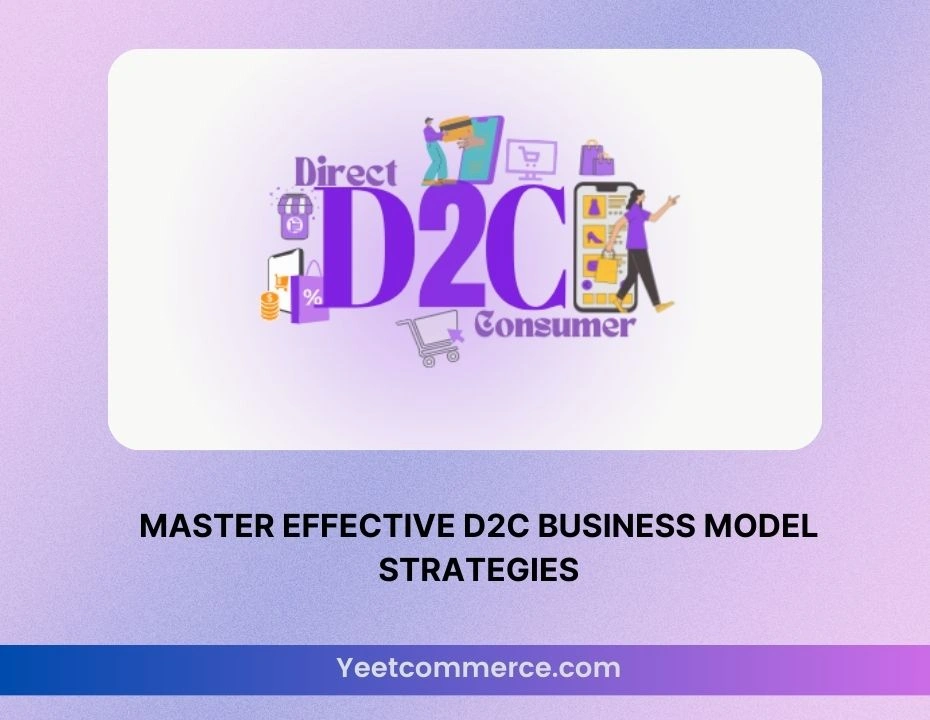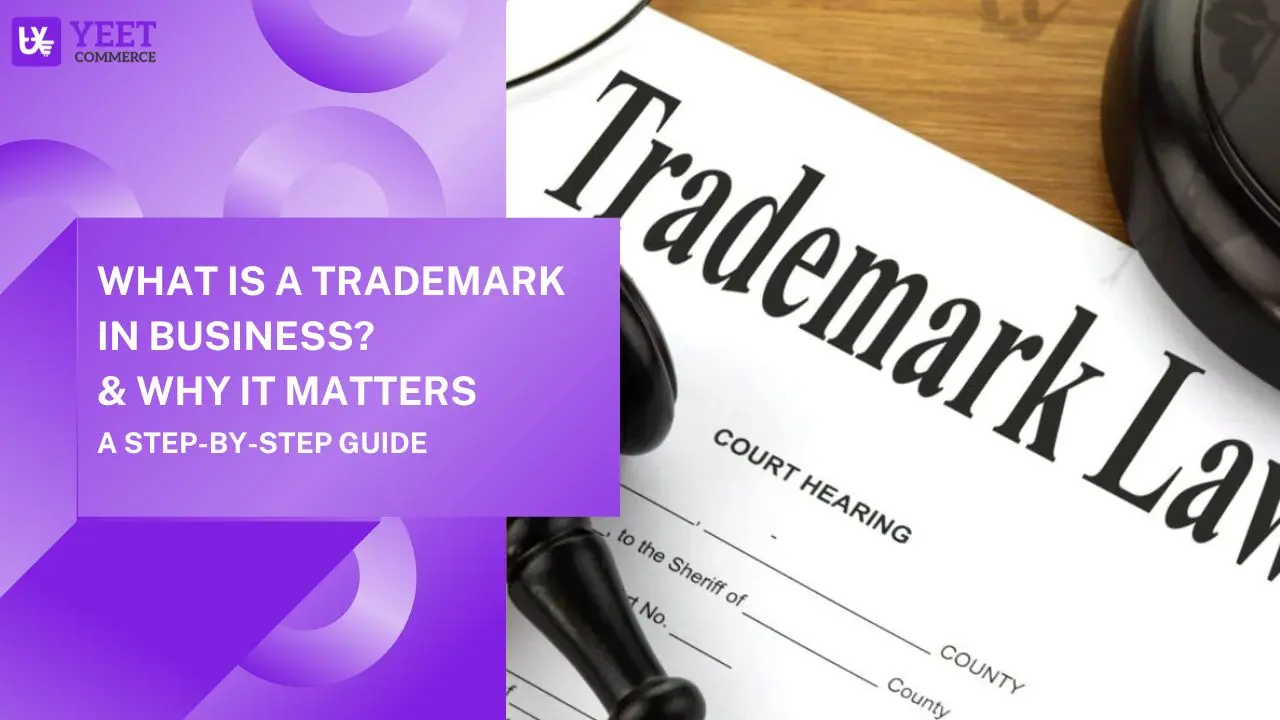The Direct-to-Consumer (D2C) Business Model is not just another business approach; it’s a game-changer. At its core, the D2C Business Model means selling products directly to consumers without intermediaries. Think of it as cutting out the middleman. No more waiting in line; your brand connects directly with the people who love it.
The Rise of D2C: A Paradigm Shift
Gone are the days when traditional retail channels held all the cards. With the rise of digital platforms and changing consumer behaviors, D2C has become the new frontier for businesses looking to disrupt the market. This shift isn’t just about convenience—it’s about redefining the entire customer experience.
Key Features of D2C Business Models
Let’s delve into the key features that make D2C such a game-changer in today’s business landscape:
- Cutting Out the Middleman: In a traditional retail setup, products pass through multiple hands before reaching the consumer. D2C eliminates these intermediaries, allowing brands to deliver products directly, often resulting in cost savings for both parties.
- Data-Driven Insights: One of the most significant advantages of D2C is the wealth of data it provides. By interacting directly with customers, brands gather valuable insights into purchasing patterns, preferences, and feedback, enabling them to tailor their offerings and marketing strategies effectively.
- Brand Control and Flexibility: D2C empowers brands to maintain full control over their identity, messaging, and pricing. This level of control fosters brand loyalty and allows for swift adjustments in response to market trends or customer feedback.
- Enhanced Customer Experience: With D2C, the customer journey becomes seamless and personalized. From browsing products to post-purchase support, brands can create meaningful interactions that resonate with their audience, building lasting relationships along the way.

Strategies for Embracing D2C in YeetCommerce
So, you’re ready to dive into the world of direct-to-consumer (D2C) strategies within YeetCommerce! Buckle up as we explore actionable tips and tricks to help you navigate this exciting terrain and maximize your D2C potential.
Crafting a Compelling D2C Brand Identity
The first step in implementing D2C within YeetCommerce is to craft a compelling brand identity. Your brand’s identity is like its personality—it’s what sets you apart from the competition and resonates with your target audience. Think about your brand values, mission statement, and unique selling proposition (USP). How can you communicate these elements effectively to create a memorable brand experience?
Leveraging Data Analytics for Targeted Marketing
Data is your best friend in the D2C world. Leverage data analytics within YeetCommerce to gain insights into customer behavior, preferences, and purchasing patterns. Use this information to segment your audience and deliver targeted marketing campaigns. From personalized product recommendations to tailored promotional offers, data-driven marketing can significantly enhance your D2C strategy.
Optimizing the Customer Journey for Seamless Experience
In the D2C model, the customer journey is everything. From the moment a customer lands on your website to post-purchase follow-ups, every interaction matters. Within YeetCommerce, focus on optimizing the customer journey for a seamless experience. Ensure that your website is user-friendly, mobile-responsive, and offers secure payment options. Provide clear and transparent information about products, shipping, and returns policies to instill trust and confidence in your brand.
Harnessing the Power of Content Marketing
Content is king in the digital age, and it plays a crucial role in your D2C strategy within YeetCommerce. Create high-quality, engaging content that educates, entertains, and inspires your audience. From blog posts and videos to social media updates and email newsletters, leverage content marketing to build brand awareness, drive traffic to your website, and nurture customer relationships. Don’t forget to optimize your content for search engines (SEO) to attract organic traffic and improve your online visibility.
Embracing Omni-channel Integration
D2C isn’t just about online sales—it’s about creating a seamless shopping experience across multiple channels. Within YeetCommerce, embrace omni-channel integration by synchronizing your online store with offline touchpoints such as physical retail locations or pop-up shops. Ensure consistency in branding, messaging, and customer service across all channels to provide a cohesive experience that delights your customers wherever they interact with your brand.
Investing in Customer Engagement and Loyalty
Customer engagement and loyalty are the lifeblood of any successful D2C business. Within YeetCommerce, invest in strategies that foster meaningful connections with your customers. Implement loyalty programs, referral incentives, and personalized rewards to incentivize repeat purchases and advocacy. Engage with your audience on social media, respond to feedback promptly, and show appreciation for their support to cultivate a loyal customer base that keeps coming back for more.
Staying Agile and Adaptive
The D2C landscape is constantly evolving, so it’s essential to stay agile and adaptive within YeetCommerce. Monitor industry trends, analyze competitor strategies, and be open to experimentation. Test new marketing channels, product offerings, and pricing strategies to stay ahead of the curve and meet the evolving needs of your customers. Embrace feedback and iteration as part of your D2C journey to continuously improve and innovate.
Case Studies of Successful D2C Brands
Ready to be inspired by some incredible direct-to-consumer (D2C) success stories? Let’s dive into case studies of brands that have mastered the D2C business model, revolutionizing their industries and capturing the hearts of their customers. From innovative strategies to creative marketing, these brands offer valuable lessons for anyone looking to thrive in the D2C landscape.
Warby Parker: Revolutionizing Eyewear
When Warby Parker launched in 2010, they set out to disrupt the eyewear industry. By cutting out the middleman and selling directly to consumers, they offered stylish, high-quality glasses at a fraction of traditional retail prices. Warby Parker’s unique approach to the D2C business model didn’t stop there. They introduced a home try-on program, allowing customers to test out frames before making a purchase. This innovative strategy not only increased customer satisfaction but also reduced the barrier to online shopping for eyewear.
Moreover, Warby Parker leveraged data analytics to refine their product offerings and marketing campaigns. By understanding customer preferences and purchasing behavior, they could tailor their collections and promotional efforts, driving growth and brand loyalty. Their commitment to social responsibility, donating a pair of glasses for every pair sold, further solidified their positive brand image.
Glossier: Building a Beauty Empire
Glossier, founded by Emily Weiss in 2014, has become a powerhouse in the beauty industry. The brand’s success lies in its community-driven approach and emphasis on customer engagement. Glossier’s D2C strategy centers around building a strong online presence, leveraging social media to connect with their audience on a personal level.
One of Glossier’s standout tactics is involving customers in product development. By actively seeking feedback and suggestions from their community, Glossier creates products that resonate with their audience’s needs and desires. This collaborative approach not only fosters a sense of loyalty but also ensures that their offerings stay relevant and desirable.
Glossier’s minimalistic branding and focus on natural beauty have set them apart from traditional beauty brands. Their commitment to authenticity and transparency resonates with modern consumers, driving their rapid growth and cult-like following.
Dollar Shave Club: Disrupting the Grooming Industry
Dollar Shave Club (DSC) took the grooming industry by storm when it launched in 2011. Their subscription-based D2C model offered high-quality razors and grooming products delivered directly to customers’ doors, at a fraction of the cost of traditional brands. DSC’s humorous and relatable marketing campaigns quickly went viral, capturing the attention of millions.
The success of DSC’s D2C business model lies in its simplicity and convenience. By offering a straightforward subscription service, they eliminated the hassle of shopping for razors and created a loyal customer base. DSC also leveraged data to personalize their offerings, ensuring customers received products tailored to their preferences and grooming habits.
In 2016, Unilever acquired Dollar Shave Club for a staggering $1 billion, highlighting the immense potential of the D2C model. DSC’s ability to disrupt a well-established industry and build a loyal following serves as a testament to the power of direct-to-consumer strategies.
Away: Redefining Travel Essentials
Away, the travel lifestyle brand founded in 2015, has redefined the way we think about luggage. By focusing on design, functionality, and storytelling, Away has created a strong emotional connection with its customers. Their D2C business model allows them to offer high-quality, thoughtfully designed luggage at a more accessible price point.
Away’s success can be attributed to their customer-centric approach. They extensively researched travelers’ needs and preferences, incorporating features like built-in USB chargers and durable materials into their products. Away’s sleek and minimalist branding, combined with their emphasis on storytelling, has resonated with modern travelers seeking both style and functionality.
Additionally, Away leverages social media and content marketing to engage with their audience. They create travel-related content that inspires and connects with their customers, fostering a sense of community and loyalty. Away’s ability to combine innovative product design with a compelling brand narrative has positioned them as a leader in the travel industry.
Conclusion: Learning from the Best
These case studies of successful D2C brands highlight the diverse strategies and approaches that can lead to success in the direct-to-consumer landscape. From Warby Parker’s innovative home try-on program to Glossier’s community-driven product development, Dollar Shave Club’s subscription model, and Away’s customer-centric design, each brand offers unique insights and inspiration.
By understanding and implementing these proven strategies, you can unlock the potential of the D2C business model for your own brand. Whether it’s through leveraging data analytics, engaging with your community, or prioritizing customer experience, the lessons from these successful brands can guide you on your journey to D2C success.


















